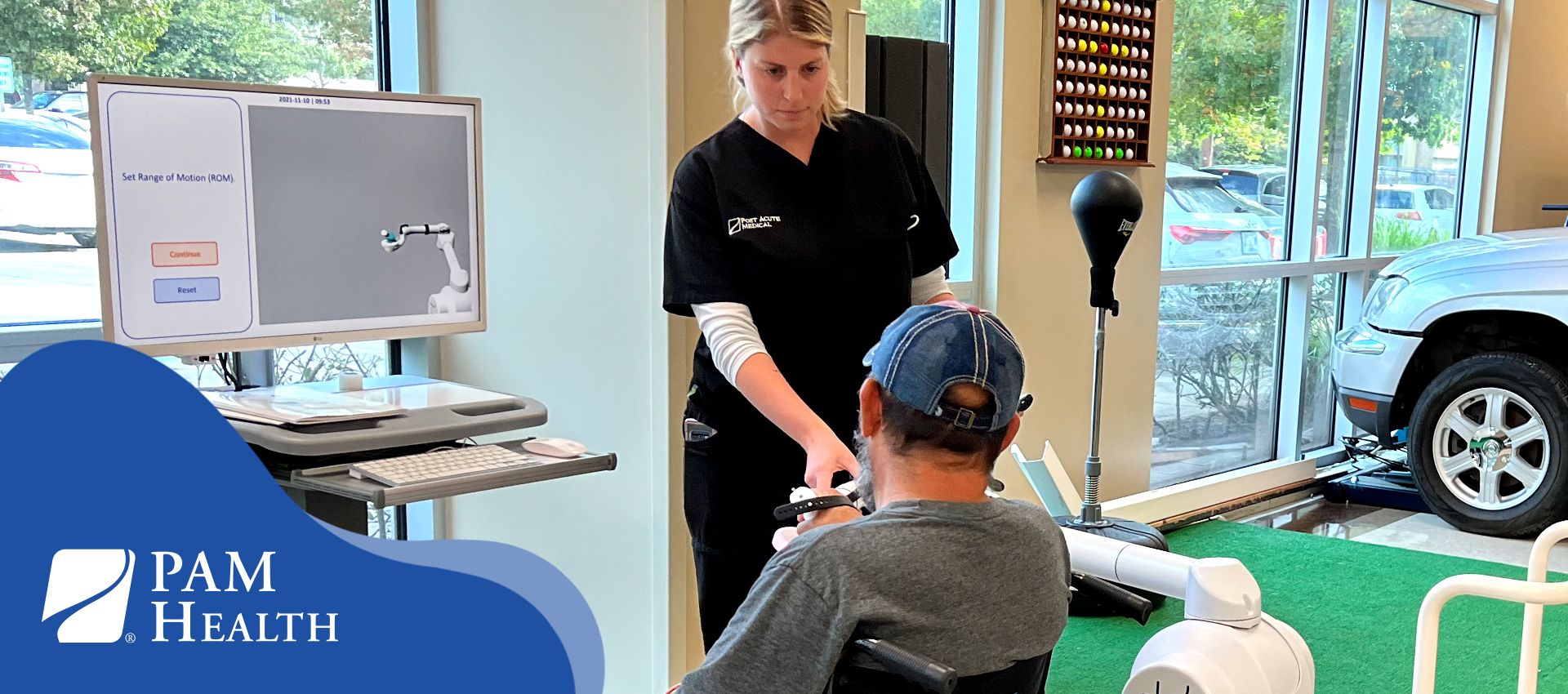
The path forward after a spinal cord injury
Car accidents, sports injuries, falls – in just a second, a devastating spinal cord injury can change a life.
Comprised of different sections, the spinal cord runs from the neck to the tailbone. It is a bundle of nerves where messages travel between the brain and the rest of the body. If injured, the extent of the injury is determined by which section of the spine is affected and whether the injury is complete or incomplete.
The leading causes of spinal cord injury include vehicle crashes, acts of violence (primarily gunshot wounds), and injury from sports/recreation activities.
READ: Understanding spinal cord injury levels
Explore Spinal Cord Injury Rehabilitation
Doctors can use CT scans or MRIs to help diagnose a spinal cord injury and once the severity of the injury is understood, rehabilitation can help patients recover or adapt to life-altering circumstances.
In some cases, patients regain partial or complete limb control while others experience severe paralysis which likely requires assistance with day-to-day living.
At PAM Health, the goal of spinal cord injury rehabilitation is to support the patient and the family. A multidisciplinary team of medical professionals works on individual cases to ensure the patient feels supported clinically and emotionally.
This team may include case managers, registered nurses, occupational therapists, physical therapists, speech pathologists, and other specialized medical professionals depending upon the patient’s individual needs.
PAM Health rehabilitation teams also use various techniques and technologies, including the eksoNR robotic exoskeleton, to assist patients. In the case of Madelyn Quiroz, who sustained a traumatic spinal cord injury from a car accident, innovative approaches like this can make the impossible possible.
A patient at PAM Health Rehabilitation Hospital of Humble, Madelyn wanted nothing more than to walk across the stage to get her high school diploma at graduation. Her caregivers worked hard to enable her to wear the eksoNR to achieve that dream on her graduation day – and provided extensive rehabilitation along the way. To learn more about Madelyn’s journey, click here.
Outside the PAM Health hospital locations, the team can conduct home and worksite analysis to ensure proper, safe access and provide patient and family education or counseling.
Spinal cord injury patients who need more intensive care can access a rehabilitation program through an inpatient hospital while some patients may prefer outpatient rehabilitation which allows patients to come to a PAM Health hospital daily for a few hours of treatment.
Whatever environment works for the patient, the PAM Health team provides a caring environment of hope and possibilities.